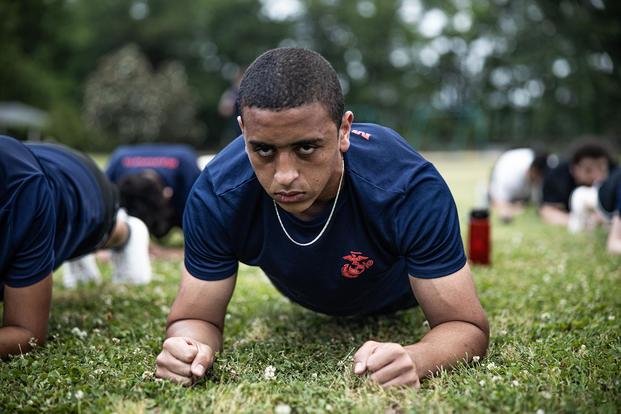You do not need to be athletic to be in excellent physical condition. Your ability to work with others, endure long days and quickly learn new skills can often be more important in the military than your physical abilities. However, some jobs in the military require a high level of fitness on top of these intangibles.
Here is a question from a young man considering military service:
Stew, I am not the most athletic person — I have never played organized sports — but I work out some and have had a job all my life. Is it possible to serve in special operations? What should my training look like if I go from conventional to special operations? Thanks, Ryan
Read Next: The Best Running Workouts to Improve Your Time on Military Fitness Tests
Yes. There are no rules stating you should be an athlete. I have known countless people who worked on farms or other manual labor jobs throughout their formative years and had a natural toughness that allowed them to do well in the military/special ops, too. I would consider your history beneficial to your future-focused training for military service.
Here is how to break it up:
Rule No. 1: Do not be in a hurry. Ensure you are doing well on the fitness test (entrance exam) long before you talk to a recruiter. Otherwise, your time in the delayed entry program may not be enough to prepare thoroughly for both phases of tactical fitness.
Pre-Training
Your goal with pre-training for military service is to assess your current strengths and weaknesses to become a “tactical athlete.” You need to be good at everything and reduce any chance of a weakness being exposed in training, especially special ops training. A weakness will typically become either a failure to meet the standard, an overuse injury or an event where you must engage mental toughness before everyone else to meet the minimum requirements.
Pre-training is about building a foundation of fitness in every component:
- Strength
- Power
- Speed
- Agility
- Grip strength
- Muscle stamina
- Endurance (multiple modes)
- Mobility/flexibility
Pre-training is broken down into two phases and can take a year or more, depending on how many strengths you need to develop.
Phase 1: Getting to the training by focusing specifically on the fitness test required to enter the community you seek. These are not minimum standard fitness tests. These are competitive entrance exams that demand maximal effort to get accepted. The high attrition rate in special ops programs is primarily due to people stopping here and not giving themselves enough time to focus on the more difficult events of their military training.
Phase 2: Getting through the training by focusing on specific events you will face in military training and special ops selection. This will usually require longer runs, longer swims with fins, rucking and other load-bearing activities (logs, boats, equipment), obstacle courses and much more.
Set a Performance Line vs. a Timeline
You will be much better off setting up a training performance starting line than joining the military timeline. Too many recruits want to become special operators and set arbitrary dates to join the military, such as immediately after high school, instead of when they are fully prepared.
Preparing for military service takes time, and you must get good at events in fitness you may have never used. Understand that becoming a tactical athlete differs from being a sports athlete. To be an athlete on a sports team, you must be a B+ in everything instead of an A to A+ in a few fitness components.
For more training ideas for military service, check out the Military.com Fitness Section, which has hundreds of articles on specific military training, recovery, fitness testing, and much more.
Want to Learn More About Military Life?
Whether you’re thinking of joining the military, looking for fitness and basic training tips, or keeping up with military life and benefits, Military.com has you covered. Subscribe to Military.com to have military news, updates and resources delivered directly to your inbox.
Story Continues
Read the full article here

